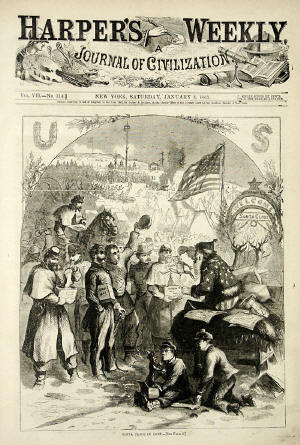Origins of Santa Claus

The Santa Claus figure as we knew today received its inspiration and its name from the Dutch legend of Sinterklaas (a Dutch variant of the name Saint Nicholas).
Dutch colonists took this tradition with them to New Amsterdam (now New York City) in the American colonies in the 17th century.
As early as 1773 the name appeared in the American press as "St. A Claus," but it was the popular author Washington Irving who gave Americans their first detailed information about the Dutch version of Saint Nicholas. In his History of New York, published in 1809 under the pseudonym Diedrich Knickerbocker, Irving described the arrival of the saint on horseback each Eve of Saint Nicholas.
This Dutch-American Saint Nick achieved his fully Americanized form in 1823 in the poem A Visit From Saint Nicholas more commonly known as "The Night Before Christmas" by writer Clement Clarke Moore. Moore included such details as the names of the reindeer; Santa Claus's laughs, winks, and nods; and the method by which Saint Nicholas, referred to as an elf, returns up the chimney. (Moore's phrase "lays his finger aside of his nose" was drawn directly from Irving's 1809 description.)
The print above is Thomas Nast's earliest published picture of Santa Claus. As known to many, Nast is generally credited with creating our popular image of Santa. This illustration appeared in the January 3, 1863 edition of Harper's Weekly, and shows Santa Claus visiting a Civil War Camp. In the background, a sign can be seen that reads "Welcome Santa Claus." The illustration shows Santa handing out gifts to Children and Soldiers. One soldier receives a new pair of socks, which would no doubt be one of the most wonderful things a soldier of the time could receive. Santa is pictured sitting on his sleigh, which is being pulled by reindeer. Santa is pictured with a long white beard, a furry hat, collar and belt. We can see that many of our modern perceptions of Santa Claus are demonstrated in the 140 year old print. This print is less popular though than the one he did after the war which also appeared in Harper's Weekly on January 1, 1881(below).





<< Home